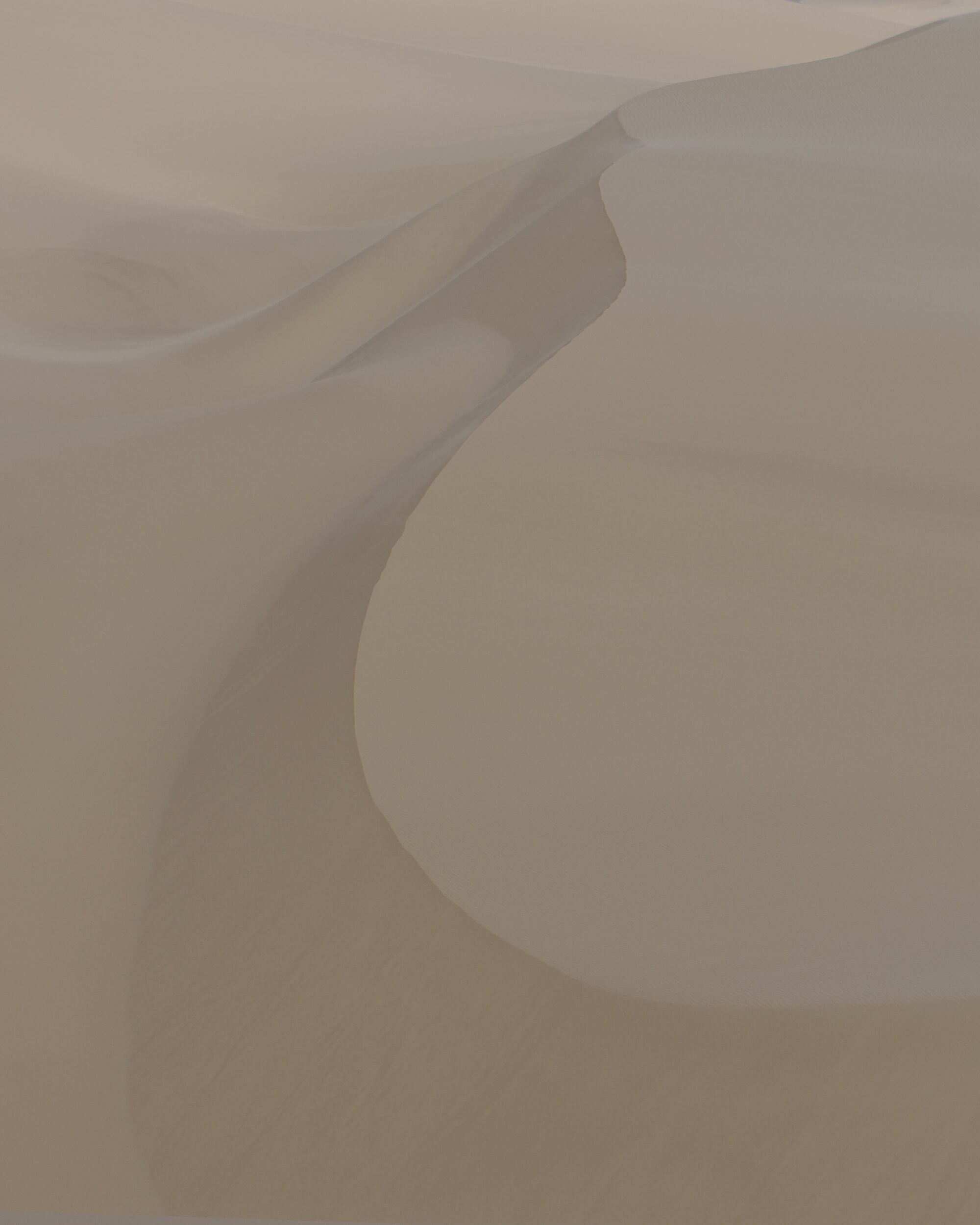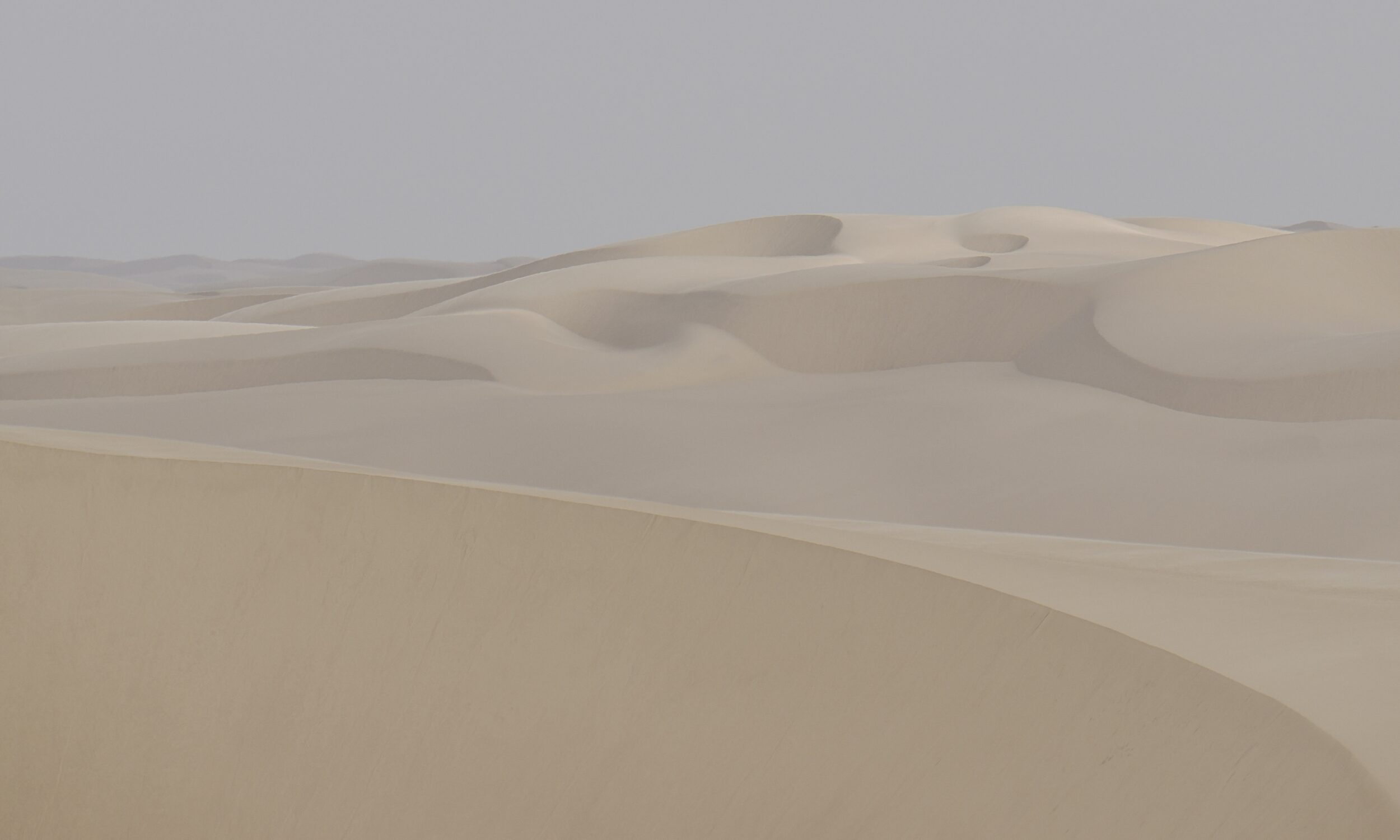Our vantage point and the time/date were essentially “as per immediately-preceding post”, but instead of looking due west, to the Atlantic, this post has heads and camera turned in other directions.
To our east, south and north, the view was almost 100% “dunescape”.

This particular dunefield is highly dynamic – its sands are very obviously “on the move”.
These dunes’ composition is relatively uniform.
The local air, so close to the Atlantic, is doubtless salt-laden, whenever the wind is “up” and coming off the ocean.
Most of these particular “shifting sands” would have been ocean-washed, ocean-delivered onto the adjacent beaches, then wind-delivered further inland; local winds are these dunes’ primary makers and shapers.
At any given instant – if the sun is shining, high in the sky – these dunes look almost uniform in colour, and relatively light.
Most “western” humans have little or no direct experience of true deserts, but harbour an “Arabian” or “Saharan” fantasy/notion of what deserts are “meant” to look like.
This particular, near-coastal bit of the Namib neatly fits the “desert fantasy”.
That is not true of the Namib, more generally.
A very short distance from “#3’s location, the Namib begins to overturn most visitors’ preconceptions about deserts…as you will see, from #4 on, in this series.
